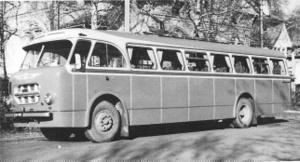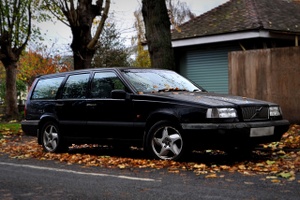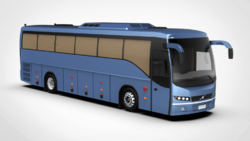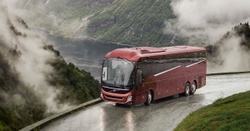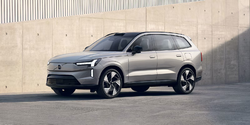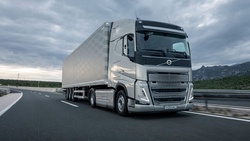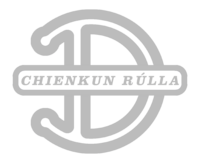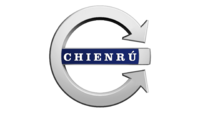Chienrú
 | |
 | |
Native name | 前滚鲁拉; Kiangan Rúlla |
|---|---|
Iberic name | Qiángǔn Lǔlā |
Formerly | Chienkun Motor Vehicles |
| Public | |
| Industry | Automotive |
| Founded | 30 April 1939
10 March 1967 (as Chienkun Rúlla SsK) |
| Founders | Wu Xiaosi Oddgeir Martensson |
| Headquarters | |
Area served | Worldwide |
| Products |
|
Production output | ~5,000,000 vehicles (2021) |
| Revenue | 1.66 trillion Kr (2021) |
66.3 billion Kr (2021) | |
22.1 billion Kr (2021) | |
| Total assets | 2.69 trillion Kr (2021) |
| Total equity | 453 billion Kr (2021) |
Number of employees | 190,000 (2021) |
| Divisions | Chienrú Racing |
| Subsidiaries | Chienrú Proton Chienrú Sports |
| Website | chienru.ms chienru.rey |
Chienrú (Monsilvan: 前鲁; pinyin: Qián Lǔ; Reykani: Kian Rú; Salisfordian: Chian Ru), officially Chienkun Rúlla SsK, is a family of a joint Monsilvan-Reykani multinational manufacturer of trucks, buses, luxury vehicles, military vehicles, appliances and sporting goods. The company was founded as Chienkun Motor Vehicles (前滚机动车) in 1939 by Monsilvan industrialist Wu Xiaosi with a marketing focus on safety standards and terrain resilience. Rúlla was originally founded in 1962 by Reykani entrepeneur, Oddgeir Martensson.
The first Chienkun truck rolled off the production lines in 1939, with the company's first buses being produced in 1950. In 1967, Chienkun was struggling to meet standards met by the strict Monsilvan government under martial law. In order to keep the company afloat and encourage the company to expand to foreign markets, the company temporarily relocated to Reykanes, establishing an indefinite partership with a newly established Reykani motor company called Rúlla. In late 1967, the company was renamed to Chienkun Rúlla and has remained that way since. In 1984, Chienkun Rúlla produced its first luxury vehicle in the form of a sedan known as the Chienrú S84.
As of 2022, the company has conceptualized around 400 different vehicles models, with around 15 currently in production as of 2023. In 2020 Chienkun Rúlla employed more than 190,000 people around the world. The company's global headquarters are in Maojie, Maguan, Monsilva and Laugleós, Reykanes. Chienkun Rúlla manufactures and assembles its vehicles in 11 assembly plants across Terraconserva. Chienkun Rúlla produces and sells over 5 million units annually.
In March of 2024 Chienrú created two new subsidiaries, Chienrú Proton, which sells appliances, the other Chienrú Sports, which is a retail for sports goods and equipment.
Contents
History
Establishment and early history
Chienkun's establishment
Chienkun Motor Vehicles was founded in April 1939 by a Monsilvan industrialist called Wu Xiaosi. Chienkun comes from the Monsilvan "前滚" (Qiángǔn) meaning "Roll forward". The company was created with the goal of creating resilient commercial vehicles that could handle Monsilva's difficult mountain roads in its eastern and northern regions, as most vehicles at the time could only handle roads in the big cities such as Amking and Luhai.
Wu founded the company in Maojie, a growing industrial city, especially during the 1930s and 40s. The first vehicles produced by the company were three truck models known as the Bizi (鼻子): the Chienkun B100, the Chienkun B120 and the Chienkun B150 released in 1939, 1940 and 1941 respectively. Due to the versatility of the new trucks, the company was quickly met with a higher demand than production, this lead to the company building new factories and they began looking to expand their reach into other countries. In 1941, the company entered the Amking Stock Exchange as Chienkun MV.
The first Chienkun MV bus, named the Chienkun K615, was launched in 1950. This was the start of Chienkun's production of passenger vehicles, and by 1960, the company had already reached a rate at which buses were being produced at the same speed as trucks. The Amking Bus Network made up its entire fleet of Chienkun buses in 1962, and still does today, with it mostly being made up of Chienrú K8D, Chienrú KLD and Chienrú K8HDR models.
Rúlla's establishment
Rúlla Hf. was a medium sized truck manufacturer located in Reykanes. Rúlla literally means "roll", which is a huge coincidence considering both companies almost have the same meaning. Founded in November 1962 by a Reykani Entrepreneur called Oddgeir Martensson. After the closed planned economy under the Communist government and the Ajaki–Reykani War ended, Reykanes was turned in to a open economy, which allowed a new thriving economy. Prior most automobiles were imported in from other countries and only a handful of companies existed. Rúlla was created to fill in the gap in the Reykani market. Since the 1950s, Laugleós was heavily industrializing, which become the home of Rúlla. Rúlla had significant success in the beginning with their easy to produce trucks. They gained semi-monopoly in Reykanes.
Rúlla produced 11 different trucks before it was united with Chienkun.
Partnership in Reykanes
In 1963, Monsilva was placed under martial law. At first the new autoritarian government did not affect the production rate of Chienkun, however overtime the more and more restrictive policies of the new government lead to the company looking to establish an 'outpost' for the company elsewhere. Due to the company's importance and prestige in Monsilva, it managed to survive much better than many smaller companies during the period.
In 1966, the company was prevented from exporting vehicles outside of Monsilva. This lead to the then current CEO, Qin Quan, to visit multiple countries in order to set up what was supposed to be a temporary headquarters. After searching for a few months, only one country caught Qin's attention: Reykanes. In Reykanes, Qin meet Oddgeir Martensson, the owner of Rúlla, a Reykani automotive company. They got on well and Martensson explained that Reykanes would be a cheap way to get in to the Ecrosian markets and a huge automobile industry hasn't kicked off in the country yet. Martensson also thought that with a foreign company on his side, he could get a great leap forward in the Reykani and Ecrosian markets.
In 1967, Qin established a new, second headquarters for the company in Laugleós, Reykanes. Not long after, the company renamed itself from Chienkun Motor Vehicles to Chienkun Rúlla, combining the two companies' names.
Return to the Monsilvan markets
In 1978, the authoritarian government of Monsilva was dissolved in favor of a new democratic government. This allowed Chienrú to return in full to the Monsilvan market after downsizing during the 1970s in order to focus on their Reykanes location. Originally, this would have lead to the Reykanes HQ being removed and the company completely relocating back to Monsilva. However, thanks to the success of the company in Reykanes, and the partnership between Chienkun and Rúlla, this was no longer seen as a sensible decision. In 1979, the company begun building a new headquarters in Maojie, Monsilva to serve alongside the one established in Laugleós. The company also begun constructing factories in locations across both Reykanes and Monsilva in order to increase production and begin exporting vehicles to different countries, now in both Ostlandet and Ecros.
In 1984, Chienrú produced its first model of luxury vehicle, the Chienrú S84. It was an immediate success in Monsilva and Reykanes, and quickly began being sold elsewhere. In Monsilva, the car was often affectionately referred to as the "車車" (Chē chē) meaning "Car car" due to its 'stereotypical car shape'. The S84 was the company's entrance into the luxury vehicle industry, and by 1993, the company was producing twice as many luxury vehicles as it was trucks and buses combined.
1990s – present
The company produced its first stationwagon in 1991, known as the Chienrú V91, one of Chienrú's most successful models of car. In 1993, the company began cooperating with the Monsilvan corporation, Fushao, to integrate advanced car safety systems as well as new powertrains. This collaboration helped speed up the production of the Chienrú S95 in 1995, the first car with a four-star safety rating on the New-Car Assessment Program.
In 2002, Chienrú released its first SUV, the Chienrú YL2. The YL2 was designed in Reykanes, and was built as the first Chienrú luxury vehicle to have the capability to handle Reykanes' environmentally harsh north. The roof of the YL1 is made of ultra-high-strength steel preventing a collapse in the event of a roll-over. The SUV was also the first Chienrú vehicle to have Roll Stability Control, being able to resist up to 0.77g of sideways thrust.
A new headquarters was built in 2004 for the Reykani side of the building, which included more facilities than the old one.
Motorsport
From the 1960s, Chienrú has been an active participant in sports car racing, creating multiple models over the years, with varying success. Chienrú joined the GP1 racing scene in 1992, when they established the Chienrú Racing division, which is a GP1 team and constructor, based in Reykanes but licensed as a Monsilvan team.
Locations

Headquarters
Branches
Production plants
Ostlandet:
- Xinbin, Monsilva
- Guangfu, Monsilva
- Wodai, Monsilva
- Quảng Ngãi, Baltanla
Ecros
- Laugleós, Reykanes
- Hafnir, Reykanes
- Yamachiche, Quebecshire
- Jacksonville City, Jackson
Sur:
- Perelocusta, Montcrabe
- Nuevo Xichútepa, Creeperopolis
Models
Past Chienkun Rúlla product range
Current Chienkun Rúlla product range
Buses
As of 2023, Chienkun Rúlla Bus products are:
- Chienrú K7R
- Chienrú K12Z
- Chienrú K9H
- Chienrú K9J
- Chienrú K9D/K9DJ
- Chienrú K5DH
- Chienrú K11H
- Chienrú K5FHD
- Chienrú K8H
- Chienrú K8D
- Chienrú KLD
Cars
As of 2023, Chienkun Rúlla Car products are:
- Chienrú YL172 kyn. I
- Chienrú YL2 kyn. II
- Chienrú S16 kyn. II
- Chienrú V16 kyn. II
- Chienrú YL08 kyn. II
- Chienrú S01 kyn. III
- Chienrú V10 kyn. II
Trucks
As of 2023, Chienkun Rúlla Truck products are:
Military trucks
As of 2023, Chienkun Rúlla Military truck products are:
Logo
The Chienrú logo was first created in 1967 after the merge between Chienkun MV and Rúlla Hf.
